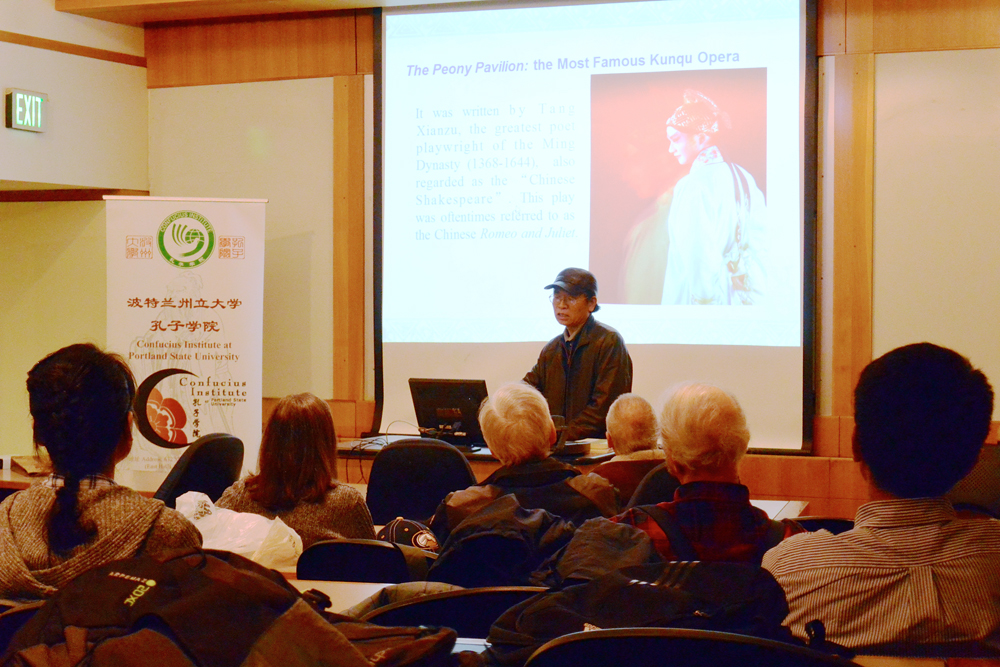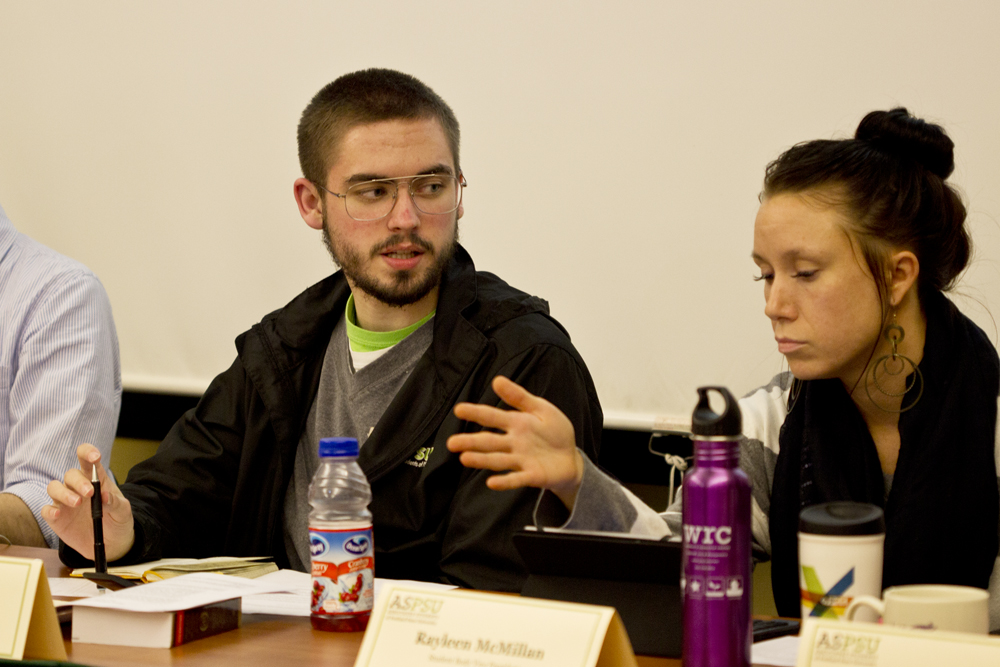Over 500 public university and community college students from across Oregon gathered at the Capitol Steps in Salem, Oregon, on Feb. 12 to fight for tuition freezes across the board.
Students from 26 universities and community colleges were present at the rally.
The crowd gathered around 12 p.m., holding signs and chanting. “We’ll allow a zero percent increase,” read one sign held by a Southern Oregon University student.
Oregon’s Senate must set aside $755 million for public universities and $560 million for community colleges in the 2015–17 biennial budget in order for Oregon schools to maintain current tuition costs, according to a press release from the Oregon Student Association.
“Gay, straight, black, white, education is a right!” said Lane Community College students as a University of Oregon pep band played for the crowd.
Balloons with school logos floated around the steps. Mascots from different universities mingled with the crowd and interacted with local reporters. Portland State students wore “Fearless Advocate” t-shirts.
The crowd quieted as leaders from across the state took the stage.
Tony Funchess, Associated Students of Portland State University Director of Multicultural Affairs, gave a commencement speech.
“We’re coming from reciprocity.” Funchess said. “Together, not alone, but together, we are asking for $755 million for universities, and together we are asking for $550 million for community colleges. The recession was stabilized on the backs of students, and we can’t take it no more.”
“As a student of color, I know personally how difficult it is to afford and access higher education. So this is an important day for me, and I thank each and every one of you for being here,” Funchess continued.
Attendees said if the senate does not set aside this money, universities and community colleges will face tuition increases and possibly program cuts.
PSU, according to OSA, has already experienced a tuition increase of 64 percent in the last decade, and could face up to a 12 percent increase next year.
“Right now, we are looking [at] between a 3 and 4 percent tuition increase at Western Oregon University,” said Associated Students of Western Oregon University’s Director of Equal Rights Organizing Dean Wright.
Wright spoke about how important higher education is to him as the child of single mother.
Wright also reminded attendees of Oregon’s “40-40-20” senate bill 253 from 2011. The goal, according to oregonlearns.org, is to have 40 percent of Oregon students attain a bachelor’s degree or higher, 40 percent attain an associate’s degree or skilled occupation certificate, and 20 percent to at least finish high school by 2025.
“That is 80 percent of the Oregon population having a higher education degree,” Wright said. “In order for that to happen, they need to put their money where their mouth is and reinvest in our education.”
The crowd of students cheered. “We’re Oregon students and we deserve higher education,” Wright said.
Several others spoke, including Taylor Marrow, a professor at Chemeketa Community College; SOU student Torii Uyehara; and two State Representatives, Mark Johnson and Peter Buckley.
“When it comes to funding education, we’re cellar dwellers,” Johnson said.
In 2014, Oregon was rated 47th out of 50 states for higher education funding per student, according to the Oregonian. A press release from OSA said funding per student decreased by 32 percent between 2002 and 2012.
SOU students woke up before 5 a.m. to make the drive from Ashland to the Capitol Steps.
“SOU is looking at facing between 3–5 percent of a tuition increase,” said Promise Grace, SOU student body president.
PSU President Wim Wiewel was present at the event but did not speak.
“If you drive it, I will work like hell in this building,” Buckley said. “The session just started, we have to keep fighting.”
Larson Ross, a PSU student who attended the rally, said, “I thought the rally was interesting. It was good to have that kind of activism, but I feel like it wasn’t necessarily radical enough compared to student movements of the past.”






